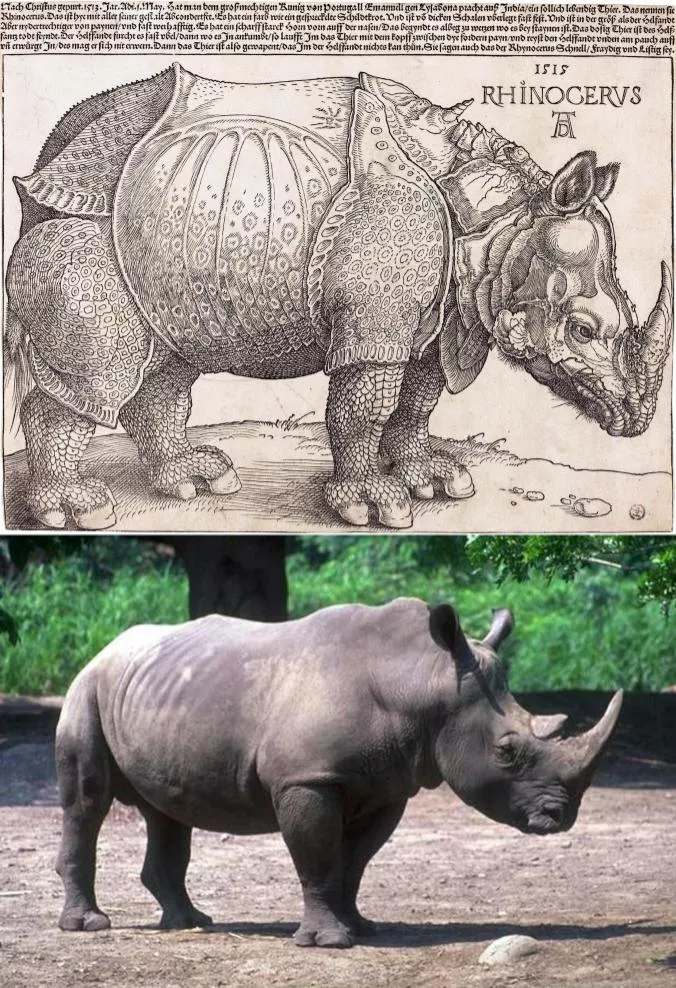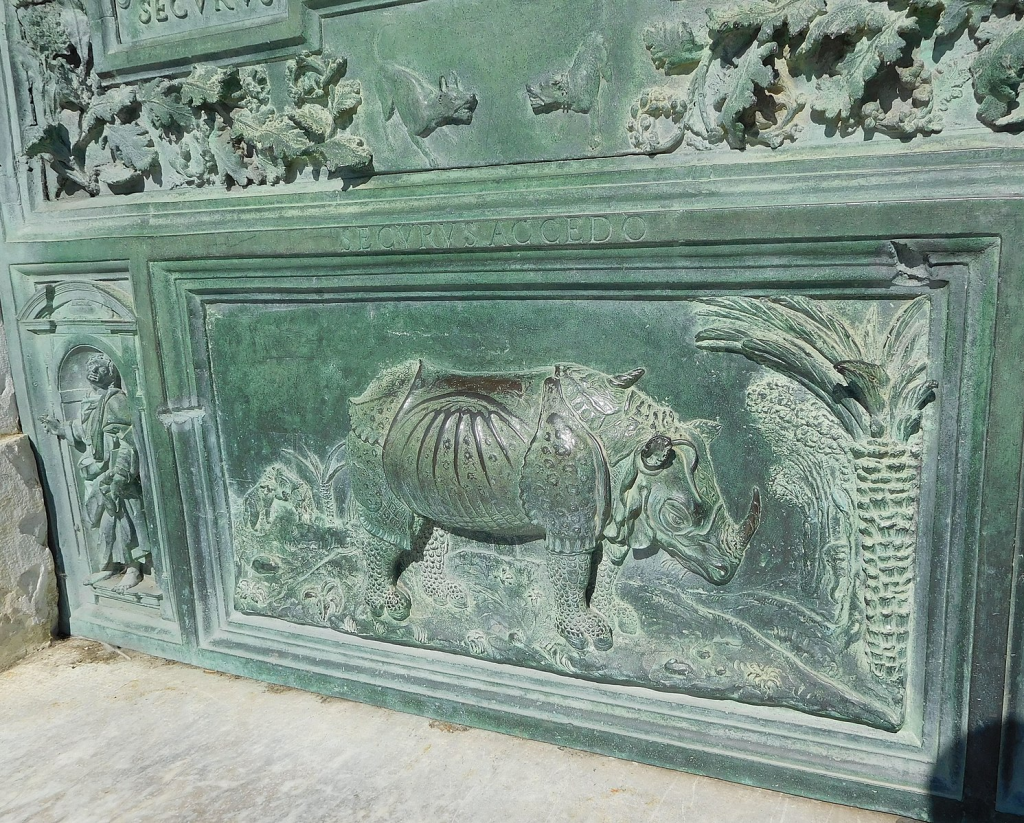How the legacy of a Rhinoceros woodcut lives on, Fascinating artists for centuries.
Who is this guy? Kinda resembles Jesus, right?

This wonderful man is known as Albrecht Durer, a German Renaissance artist born in 1471, and he is portrayed here in a self-portrait. He was asked by an unknown artist to draw his interpretation of a rhinoceros. Without any concrete references but only a brief description and sketch, he was able to execute it quite accurately. However he added intricate metal sheets of armor, despite its flaws, it was still freakishly similar to the Indian rhinoceros. This sketch was later turned into an engraved woodcut.
Woah, you could say the resemblance is quite uncanny. However, Durer’s version looks very mythological rather than realistic.
The Rhinoceros, 1515
What you see here is actually a woodblock print from the interpreted drawing. As detailed and meticulous as the drawing is, imagine carving this on wood to create a print. That is incredible.

The Dürer engraving gained massive success, this Rhino sketch spread throughout Europe. Approximately 5,000 original prints were sold during his life. Amazingly this image became an influential emblem throughout eras, to be represented in architecture, design, typography, culture, objects, and fashion.
How does a Rhinocerous print impact design, typography, science, tools, fashion, architecture?
Architecture:
The Dürer Rhinoceros is also beautiful engraved in the door of the Cathedral of Pisa, on the bottom left corner. If you look closely you can tell the rhino stays true to its original design by the rays running down the belly.
The Dürer Rhinoceros is also beautiful engraved in the door of the Cathedral of Pisa, on the bottom left corner. If you look closely you can tell the rhino stays true to its original design by the rays running down the belly.


Science and tools:
Arms of the Society of Apothecaries logo, originally designed by William Camden in 1617. Used by permission of the Wellcome Library, London
A rendition of the rhinoceros is also represented in science and tools in this medicinal logo. This is the Arms of the Society of Apothecaries, as you can see the rhino is at the top. This is originally designed by William Camden but it was inspired by and indebted to Durer.
Objects and Design:
This iconic image also inspired an iconic artist by the name of Salvador Dali who became fascinated with the rhinoceros.
“The rhinoceros is the only animal that carries an incredible amount of cosmic knowledge within its armor ”.
Salvador Dalí
Fast-forwarding over 400 years later, from 1515 when Durer first sketched the rhinoceros, it became immortalized and still remained relevant. Salvador Dali had an affinity towards this animal, it began in his childhood home where there was a “Rhinoceros” woodcut xylograph, designed by Albrecht Durer.
Look at these different versions of the “rhino sculptures” created by Dali! If you observe closely again The intricate details of the rhino stay true to its original design. My personal Favourite is “Cosmic Rhinoceros”, it is very distinctive to his style of surrealism, it looks like the creature morphed into a fantasy creature!
“Rhinoceros dressed in Laces” or “Rhinoceros Habille en Dentelles” 1954

“Cosmic Rhinoceros” 1956

Now you can tell his obsession to the Rhino is real.
Fashion:
Even Fashion designers as too? Well, Valentino is a fan! 500 years later this rhino still impacts and fascinates artists, architects, and fashion designers. This beautiful embroidered lace dress inspired by Durer was taken in 2013. A true testament to the iconic rhino spanning throughout centuries. Who would have thought? I wonder what his reaction would be, if he were alive to see this.


Link sources:
https://www.carredartistes.com/en/blog/the-history-of-the-durer-rhinoceros-n109
http://www.rhinoresourcecenter.com/pdf_files/129/1290852117.pdf
https://www.thedaliuniverse.com/en/news-dalis-fascination-the-rhinoceros
Image sources:
Cathedral of Pisa
https://www.airdolomiti.eu/destinations/pisa/what-to-see/pisa-cathedral-baptistery
Rhino
https://en.wikipedia.org/wiki/D%C3%BCrer%27s_Rhinoceros
https://wellcomecollection.org/works/a9bc353w
https://www.thedaliuniverse.com/en/news-dalis-fascination-the-rhinoceros
https://www.pinterest.ca/pin/194710383863523514/?nic_v2=1a6bW2lTu